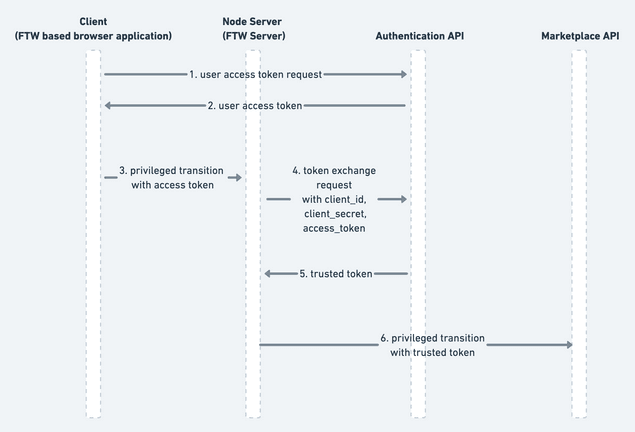Last updated
Privileged transitions
This article introduces you to the concept of privileged transitions and how Sharetribe uses them to invoke actions from a trusted context.
Table of Contents
What are privileged transitions?
In Sharetribe, a process transition is an edge between two states in the transaction process graph. Invoking transitions is guarded in the process definition by tying them to a specific state when they can be transitioned and by defining who can perform the transition. This way transition requests have built-in validation of who can invoke them and in what state of the transaction flow.
However, there are moments when more control is required on who can initiate a transition and especially with what kind of parameters. Take discounts on pricing by leveraging discount coupons managed by a 3rd party service for example. A coupon code can be validated in the client side by invoking the coupon service but this will not limit who will be technically able to invoke a pricing related transition with discounted price parameters.
This is where privileged transitions come into play. They are transaction process transitions that can be invoked only from a trusted context. In other words, this means that you can build your own server side validation that sits between your marketplace UI and the Sharetribe Marketplace API. In the discount coupon example, this means that the discount coupon that a user has can be passed as a parameter in the transition request. Server side transition request validation can invoke a 3rd party service to verify a discount code, update pricing parameters accordingly, and pass those to the transition that has pricing actions tied to it.
How do privileged transitions work?
Standard authenticated Marketplace API requests require a valid access token obtained from the Authentication API. Privileged transitions differ here by requiring a special kind of trusted token to authenticate properly. A trusted token can be obtained by exchanging a valid access token to a trusted one in the Authentication API by providing a client secret. The client secret is not to be exposed publicly, securing that privileged transitions can only be invoked by a trusted source, i.e. your own backend implementation.
The client secret is tied to a Marketplace API application. When exchanging an access token to a trusted one, the client secret needs to be from the same application as the client ID that was used to obtain the access token.
Remember to never expose the client secret publicly. Doing so would enable full control over requests that invoke privileged transitions.
How to use a privileged transition
A privileged transition is defined by setting a privileged? attribute
to true for the given transition in a transaction process as follows:
{:name :transition/request-payment
:actor :actor.role/customer
:actions [{:name :action/create-pending-booking}
{:name :action/privileged-set-line-items}
{:name :action/stripe-create-payment-intent}]
:to :state/pending-payment
:privileged? true}Privileged transitions are configured just like a normal transitions. However, what's special about privileged transitions is that, unlike normal transitions, they can contain privileged actions. Privileged actions validate that they are always used in a trusted context and usually handle sensitive information. An example of such action is privileged-set-line-items which allows full control over the price of a transaction, including the commission.
Operator transitions in the Integration API
The Integration API
makes it possible to invoke transitions
for which the :actor is set to :actor.role/operator.
As the Integration API authentication requires knowledge of the integration application's client secret and is meant to be used only from your own backend implementation, it is considered a trusted source for invoking transitions. As a consequence, the operator transitions can utilize any privileged actions. For instance, privileged-update-metadata action can be used to update the transaction's metadata.
